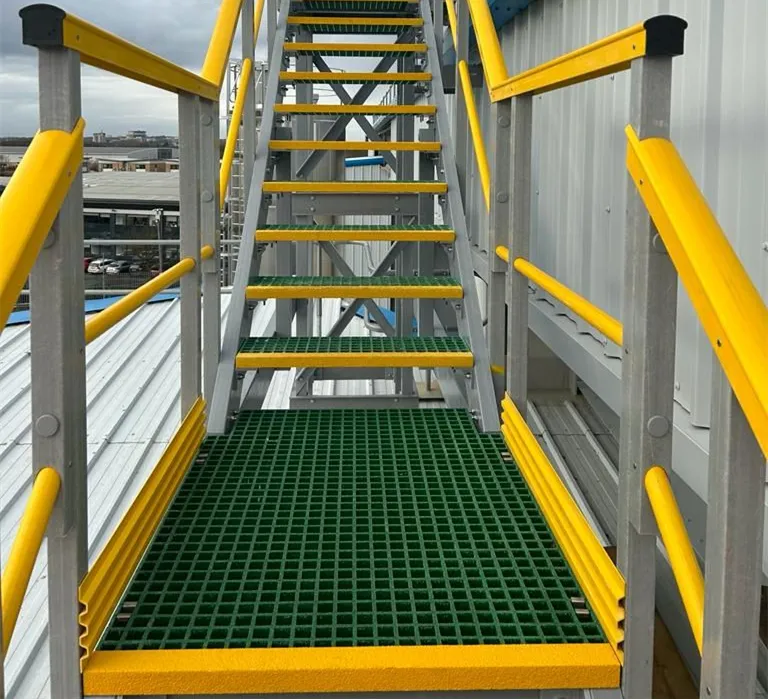loading...
- No. 9, Xingyuan South Street, Dongwaihuan Road, Zaoqiang County, Hengshui, Hebei, China
- admin@zjcomposites.com
- +86 15097380338
- Welcome to visit our website!
cutting frp grating
Understanding Cutting FRP Grating A Comprehensive Guide
Fiber Reinforced Polymer (FRP) grating is increasingly becoming a popular choice for various applications due to its excellent strength-to-weight ratio, corrosion resistance, and durability. It is widely utilized in industries such as wastewater treatment, chemical processing, pulp and paper, and marine environments. However, the efficient cutting and installation of FRP grating can pose certain challenges. Understanding the process and techniques for cutting FRP grating is essential for maximizing its benefits and ensuring safety on site.
When it comes to cutting FRP grating, several methods are available. These include using power tools such as circular saws, jigsaws, or band saws, as well as hand tools. The choice of cutting method often depends on the thickness of the grating and the complexity of the cutting task. Circular saws are generally the most suitable for straight cuts, whereas jigsaws can be better for intricate designs. It is crucial to use blades designed for cutting fiberglass or composite materials, as this will ensure a smooth finish and prevent any fraying at the edges.
Understanding Cutting FRP Grating A Comprehensive Guide
Once you have marked the grating and donned your protective gear, it’s time to begin cutting. For a cleaner cut, set the saw to a slower speed, which reduces fraying and provides a neater edge. It's best to cut from the underside of the grating whenever possible, as this method can hide any minor imperfections that may occur on the surface.
cutting frp grating

After cutting the FRP grating, edge finishing becomes relevant. The edges of the cut areas may require sanding or trimming to eliminate sharpness and enhance safety. A standard sanding block or a power sander with fine-grit sandpaper can effectively smooth the edges.
In addition to cutting techniques, it is also critical to consider the installation process of FRP grating. Proper alignment and secure fixing are vital to ensuring the longevity and structural integrity of the installation. Using appropriate fastening systems, such as clips or brackets, can help distribute weight evenly across the grating, minimizing the risk of sagging or failure.
Furthermore, maintaining FRP grating is important for its lifetime and performance. Regular inspections for signs of wear or damage can prevent larger issues down the line. While FRP is resistant to many corrosive substances, it is still advisable to clean any spills or debris promptly to maintain its appearance and functionality.
In summary, cutting FRP grating requires thoughtful preparation, the right tools, and techniques to ensure quality results. By following safety procedures and employing best practices in both cutting and installation, individuals can leverage the many benefits of FRP grating in their projects effectively. Whether for industrial applications or specialized architectural designs, understanding how to cut and use FRP grating can lead to enhanced performance and safety in various environments.
-
The Rise of FRP Profiles: Strong, Lightweight, and Built to LastNewsJul.14,2025
-
SMC Panel Tanks: A Modern Water Storage Solution for All EnvironmentsNewsJul.14,2025
-
GRP Grating: A Modern Solution for Safe and Durable Access SystemsNewsJul.14,2025
-
Galvanized Steel Water Tanks: Durable, Reliable, and Ready for UseNewsJul.14,2025
-
FRP Mini Mesh Grating: The Safer, Smarter Flooring SolutionNewsJul.14,2025
-
Exploring FRP Vessels: Durable Solutions for Modern Fluid HandlingNewsJul.14,2025
-
GRP Structures: The Future of Lightweight, High-Performance EngineeringNewsJun.20,2025
